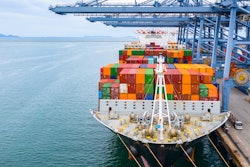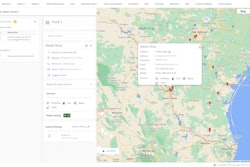
It has been an extraordinary past 12 months in the global food supply chain. In addition to recent events in the Red Sea, the industry has seen everything from geopolitical tensions and economic uncertainty to extreme weather events, technology-powered digital disruption and more. The cold food and beverage supply chain has faced unprecedented challenges, bookended as the most stolen commodity in transit, according to BSI’s 2024 Supply Chain Risks and Opportunities report.
Against these challenges, leveraging data-driven insights to identify and adopt necessary prevention methods is encouraged. Establishing trust through collaboration with industry peers, competitors and colleagues is best practice as well. As the complexities of our world continue to evolve, trust and cross-industry cooperation, in addition to utilizing prevention methods informed by data, will best position organizations to efficiently maintain risk mitigation against rising threats such as theft.
The rise in theft and its significance
Businesses seeking to manage their supply chains effectively and sustainably face unprecedented challenges in successfully transporting goods from source to shelf, given the convergence of powerful circumstances impacting global supply chains today. Recent BSI research highlights the challenge the food and beverage industry face regarding theft. According to data, food and beverage items now represent 22% of all thefts globally, up from 17% in 2022 and 14% in 2021. Stolen agricultural food products have also risen by 10% and now account for one in ten hijacking incidents.
The rise in thefts come during a time of increased food prices. Global inflation has resulted in sharp price increases of food and beverage over the past few years, causing products to remain in high demand, including many grocery staples. According to the European Commission, olive oil prices were 75% higher in September 2023 than in January 2021. Moreover, inflation rates will likely continue to be exacerbated by a variety of external factors, including regional conflicts, the lingering effects of COVID-19 and climate change-related disruption. In the United States, for example, inflation went up in February, against expectation, demonstrating that there could still be a bumpy road ahead.
Despite ongoing proactive efforts to mitigate these risks, cargo theft has remained notably high across all commodity incidents. There has been a drop in theft from facilities (26% to 21%) but a rise in stolen goods from containers and trailers (4% to 14%) and from employee belongings, truck parts or cash (7% to 10%). This is a trend seen across the food and beverage sector, with many attributing it to a perception that stealing food in transit is relatively easy to execute in comparison to higher-value commodities; food may be less likely to be shipped with tracking devices and anti-theft technologies, potentially making it more vulnerable.
The data presents a complicated global picture, with many diverse considerations across markets and regions. Yet, the benefits that come from supply chain actors staying vigilant against disruption remain consistent. For example, commodity robbery is most prevalent in Europe (37%) and North America (23%). However, violent hijackings more frequently took place in North and South America. Furthermore, BSI’s data outlines that nearly seven in ten (68%) thefts globally in 2023 occurred in trucks; thieves commonly targeted parked trucks in Europe, linked to a lack of secure parking as well as rest requirements for drivers.
Data-driven preparation and trust remain key defenses to mitigate risk
Preparation is crucial for organizations to recognize the changing nature of risk and its potential to unlock new opportunities. Within this “new era” of uncertainty and extreme climate events, organizations can put themselves on the front-foot by considering an evolved, proactive approach to risk, powered by data and actionable insights to enhance efficiency and strengthen existing measures. These insights can help organizations address today’s pressing global supply chain challenges to manage and mitigate vulnerabilities faster and more accurately than human capability alone. While technology has a role to play, it is worth noting that the human touch is essential to fine-tune all data-based approaches. By combining human and digital forces, organizations will have the opportunity to utilize a 360-degree perspective of the market in order to future-proof their operations against whatever is coming down the track.
Additionally, the data highlights that trust is the most valuable commodity in the supply chain. As complexity and scale increase, trust becomes the cornerstone of collaboration and risk mitigation. Trust must be earned both with peers and colleagues, but once in place it can facilitate industry-wide collaboration. This matters because given the rapidly changing nature of our environment, no single organization can succeed alone in unlocking today’s opportunities and best practices.
Mapping a path forward together
The moment to come together and partner to succeed is now – to overcome the most prevalent actors having a major impact on the global food supply chain – geopolitical tension, inflation, cybersecurity, transatlantic ties and green investment. The prize of a better, safer, more sustainable global supply chain where businesses can confidently ensure the safe travel of food products from source to shelf can be earned together.


















